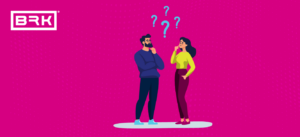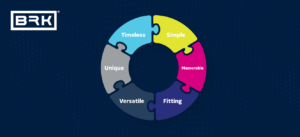
Meredith Carter
10.08.2024


10.08.2024
Remember that fun fact from a previous article sharing what’s even better than free advertising?
I can’t stop thinking about it.
I mean, I would never have guessed that Ferrari earns almost as much in branded merchandise as it does in selling cars.
It is, in a way, mind-blowing.
The fact that it does, however, comes from two things: creating a product that is consistently fantastic—that its loyal fans love—and having a great logo.
Both of these go together, and are responsible for the eye-opening fact, but…

If you zoom out in any field, you can see certain similarities that define whatever’s excellent in that field.
Great stories share certain characteristics, for example, as do happy families, peak performers, and delicious meals.
When it comes to logos, there are 6 characteristics that great logos have—and which lesser logos don’t.
Curious to know what they are?
Let’s start at the beginning.
Great logos, like great paintings, are simple.
Consider the navy-blue star with a white border which represents the Dallas Cowboys, or the interlocking “NY” which represents the New York Yankees.
Neither of these is complex, neither of them is intricate.
Both are very simple, so simple you can spot them from far away or take them in at a glance.
It shouldn’t be too surprising that they’re also world-famous.
One of the qualities that simple logos make possible, is that they’re very easy to remember.
That computer with an apple that’s had a bite taken out of it?
Yeah, that would be an Apple computer.
It almost could not get any easier to remember than that one—or many others of similar stature.
In all such cases, you probably just have to think of the company’s name and—bam— the logo springs to your mind at once.

A great logo for one company will not be the same as a great one for another.
That’s because great logos fit with the brands they represent—they are tightly related to what those companies offer and how they deliver it.
This is true even when images aren’t used.
Take the font script for Coca-Cola’s logo, for example.
This font is classic and timeless.
It feels elegant and approachable.
As such, it all but says that it is the real thing, the original, the number one choice for refreshment not just now, but as far back to the past or forward into the future as you can imagine.
And all this fits completely with the company’s brand identity.
Just consider Coca-Cola and Metallica switching fonts!
The resulting effect would be disastrous for both because the fonts would be completely at odds with what each represents.
Logos are used on just about anything you can imagine.
In fact, this is one of the things that makes logos every bit worth their price, and more—something we discussed in a recent post on why logos cost so much.
Put simply, they look good on everything from t-shirts and hats to bottles and boxes.
A logo that only looked good in one format may be interesting, but it would be a stretch to call it great.
Great logos are as unique as the companies, teams, and bands that they represent.
Assuming they are simple, this is in large part what makes them memorable, too.
Consider the Rolling Stones logo of a red tongue sticking out from a pair of full, red lips.
This logo, like the band, is all about attitude.
There’s nothing else like it, too, right?
That is a huge part of what makes it great; it instantly sets the band apart from all others.
A logo that works for only a single campaign may be okay—at best.
But logos that are used for decade upon decade are truly great.
These logos may be refreshed from time to time, they may be modified around the edges, but the essence of them remains the same.
These logos continue to provide value for the companies they represent without end.

They should, because they are.
Great logos can also be a lot of work—not just for one person but a whole staff of them.
If your company isn’t set up to create a great logo, then, and yet you recognize the numerous benefits of having one, let’s chat!